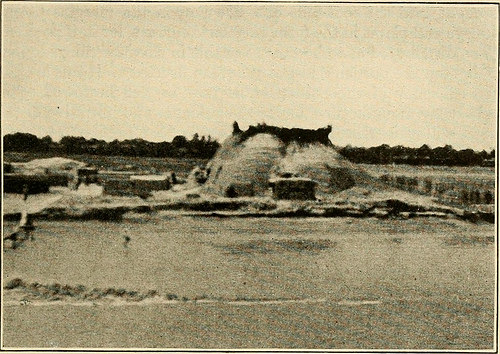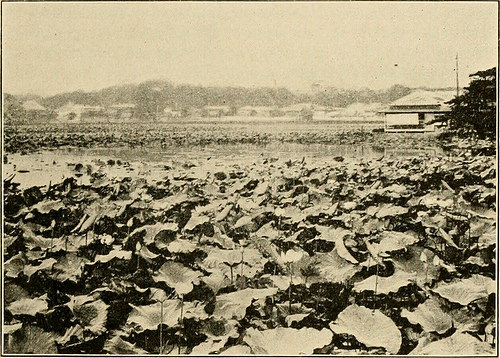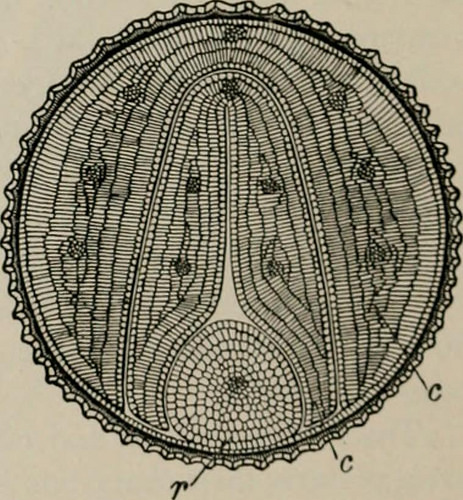Check out these organic online food store images:
Image from page 150 of “Farmers of forty centuries; or, Permanent agriculture in China, Korea and Japan” (1900)

Image by Internet Archive Book Images
Identifier: farmersoffortyce01king
Title: Farmers of forty centuries; or, Permanent agriculture in China, Korea and Japan
Year: 1900 (1900s)
Authors: King, F. H. (Franklin Hiram), 1848-1911 Bruce, J. Percy (Joseph Percy), b. 1861, ed
Subjects: Agriculture Agriculture Agriculture
Publisher: Emmaus, Pa., Organic Gardening Press
Contributing Library: The Library of Congress
Digitizing Sponsor: Sloan Foundation
View Book Page: Book Viewer
About This Book: Catalog Entry
View All Images: All Images From Book
Click here to view book online to see this illustration in context in a browseable online version of this book.
Text Appearing Before Image:
square miles of the cultivatedland, cutting down the food-producing area to 19,263 squaremiles; and this area is made still smaller by devoting 123,000acres to tea, producing in 1906 58,900,000 pounds, worth nearly,000,000. Nor do these statements express the full measureof the producing power of the 21,321 square miles-of cultivatedland, for, in addition to the food and other materials named,,365,000 worth of braid were made from straw and woodshavings; ,000,000 worth of rice straw bags, packing cases and TEXTILE PRODUCTS IN JAPAN 147 matting; and ,085,000 worth of wares from bamboo, willow andvine. As illustrating the intense home industry of these people, wemay consider the fact that the 5,453,309 households of farmersin Japan produced in 1906, in their homes as subsidiary work,120,527,000 worth of manufactured articles. If correspondinglyexact statistical data were available from China and Korea asimilarly full utilization of cultural possibilities would be revealedthere.
Text Appearing After Image:
Fig. 76. Earth and clay brick kiln on the bank of the Pei-ho, using sorghumstems for fuel. This marvellous heritage of economy, industry and thrift, bredof the stress of centuries, must not be permitted to lose virilitythrough contact with western wasteful practices, now exalted toseeming virtues through the dazzling brilliancy of mechanicalachievements. More and more must labour be dignified in allhomes alike, and economy, industry and thrift become inheritedimpulses, compelling and satisfying. Cheap, rapid, long-distance transportation, already well startedin these countries, will bring with it a fuller utilization of the large 148 THEFUELPROBLEM stores of coal and mineral wealth and of the enormous availablewater-power, and as a result there will come some temporarylessening of the stress for fuel and, with better forest management,some relief along the lines of building materials. But the time isnot a century distant when, throughout the world, a fuller, betterdevelopment must tak
Note About Images
Please note that these images are extracted from scanned page images that may have been digitally enhanced for readability – coloration and appearance of these illustrations may not perfectly resemble the original work.
Image from page 124 of “Farmers of forty centuries; or, Permanent agriculture in China, Korea and Japan” (1900)

Image by Internet Archive Book Images
Identifier: farmersoffortyce01king
Title: Farmers of forty centuries; or, Permanent agriculture in China, Korea and Japan
Year: 1900 (1900s)
Authors: King, F. H. (Franklin Hiram), 1848-1911 Bruce, J. Percy (Joseph Percy), b. 1861, ed
Subjects: Agriculture Agriculture Agriculture
Publisher: Emmaus, Pa., Organic Gardening Press
Contributing Library: The Library of Congress
Digitizing Sponsor: Sloan Foundation
View Book Page: Book Viewer
About This Book: Catalog Entry
View All Images: All Images From Book
Click here to view book online to see this illustration in context in a browseable online version of this book.
Text Appearing Before Image:
Fig. 56. – Boone Road vegetable market, April 6th, Shanghai, China. The largevegetables in the lower section are lotus roots. of animal to vegetable foods in the dietaries of these people. It isnevertheless true that they are vegetarians to a far higher degree ECONOMY OF VEGETABLE DIET 121 than are most Western nations, and the high maintenance effi-ciency of the agriculture of China, Korea and Japan is in greatmeasure rendered possible by the adoption of a diet so largelyvegetarian. Hopkins, in his Soil Fertility and Permanent Agricul-ture, page 234, makes this pointed statement of fact: 1,000 bushelsof grain has at least five times as much food value and will supportfive times as many people as will the meat or milk that can bemade from it. He also calls attention to the results of many
Text Appearing After Image:
Fig. 57. – Lotus pond with i)iant in bloom; cultivated for their fleshy roots usedfor food, shown in Fig. 56. Rothamsted feeding experiments with growing and fatteningcattle, sheep and swine, showing that the cattle destroyed out-right 57-3 pounds in every 100 pounds of dry substance eaten, andthat this passes off into the air, as the whole of wood does exceptthe ashes, when burned in the stove. They left in the excrements36-5 pounds, and stored as increase only 6-2 pounds out of the 100.With sheep the corresponding figures were 60-1 pounds; 31-9pounds and 8 pounds; and with swine they were 65-7 poimds;16-7 pounds and 17-6 pounds. But less than two-thirds of the 122 SOME CUSTOMS OF THE PEOPLE substance stored in the animal can become food for man. Hencewe get only 4 pounds in 100 of the dry substances eaten by cattlein the form of human food; only 5 pounds from the sheep; and 11pounds from swine. In view of these relations, recently established as scientific factsby rigid research, it
Note About Images
Please note that these images are extracted from scanned page images that may have been digitally enhanced for readability – coloration and appearance of these illustrations may not perfectly resemble the original work.
Image from page 59 of “The microscopy of vegetable foods, with special reference to the detection of adulteration and the diagnosis of mixtures” (1916)

Image by Internet Archive Book Images
Identifier: vege00wintmicroscopyofrich
Title: The microscopy of vegetable foods, with special reference to the detection of adulteration and the diagnosis of mixtures
Year: 1916 (1910s)
Authors: Winton, Andrew Lincoln, 1864-1946 Moeller, Josef, 1848-1924 Winton, Kate Grace Barber, Mrs
Subjects: Plant anatomy Food adulteration and inspection Microscopy — Technique
Publisher: New York, John Wiley & sons, inc. [etc., etc.]
Contributing Library: University of California Libraries
Digitizing Sponsor: MSN
View Book Page: Book Viewer
About This Book: Catalog Entry
View All Images: All Images From Book
Click here to view book online to see this illustration in context in a browseable online version of this book.
Text Appearing Before Image:
.The Endosperm constitutes the bulk ofmany seeds (e.g. cereals), but is almost, -^ entirely absent in others (e.g. bean, crucifers). Fig. 22. Endos{)eriii of Uate Stone with reserve material in In the ccreals the outcr laycF OF layers ofoSoeller)^^ ^^^ ^^ the endosperm consist of aleurone cells, the remainder, of starch cells; in linseed the endosperm (Fig. 21, E), which constitutes about half of the seed, con-tains aleurone grains and oil, but no starch; in coffee and the date stone (Fig. 22) the bulky endosperm contains reserve material in the form of thick-ened cell-walls. The Embryo is a young plant with Cotyledons or seed leaves. Radicle or young root, and Plumule or bud. It may be embedded in the center or one side of the endosperm (e.g. cereals, coffee), or it may constitute the bulk of the seed (e.g. legumes, crucifers, cottonseed). In the latter case the reserve material, which may be largely starch or oil, is located chiefly in the thickened cotyledons and radicle (Fig. 23).
Text Appearing After Image:
Fig. 23. Mustard Seed in cross sec-tion. Kmbryo consists of c foldedcotyledons and r radicle. Reservematerial, consisting of oil and pro-teids, is entirely in the embryo.(TSCUIRCH.) THE STEM (BARK AND WOOD). The stem is the axis connecting the leaf and root systems. It maybe aerial or subterranean, simple or branched, herbaceous or woody. Insome herbaceous plants it is exceedingly sliort, the leaves appearing tospring directly from the root, while in many herbaceous and all woody MORPHOLOGY OF ORGANS. 39 plants it consists of an elongated trunk with or without a system ofbranches. Not only does the stem serve to mechanically support the leaves, butalso, by means of the bundles, to distribute over the plant solutions of saltsabsorbed by the roots, of carbohydrates assimilated by the leaf, and ofother organic substances formed in various parts of the plant. Duringthe resting season large amounts of reserve material are stored in stems. AERIAL STEMS. The fibro-vascular bundles of phenoga
Note About Images
Please note that these images are extracted from scanned page images that may have been digitally enhanced for readability – coloration and appearance of these illustrations may not perfectly resemble the original work.
